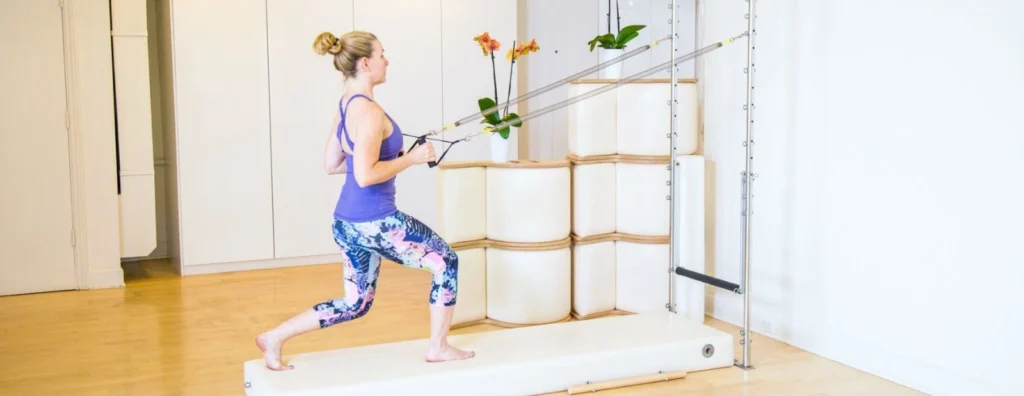Are you exploring the world of Pilates but feeling unsure about the Pilates accessories needed to kickstart your journey?
If you’ve ever attended Pilate classes , chances are you’ve encountered props. These seemingly small items, ranging from balls to bands, are studio staples designed to elevate your Pilates experience. Much like the springs on a Reformer, props can either bolster stability or dial up the challenge, depending on how they’re incorporated into your routine. In the hands of creative instructors, these props become the “secret sauce,” infusing the traditional Mat repertoire with excitement and innovation. Curious about these transformative tools and their impact?
Dive into our guide on the most frequently used Pilates accessories, exploring not just how we use them, but why they’re integral to unlocking your Pilates potential.
10 Pilate Accessories That Can Enhance Your Workout
1. Foam Roller
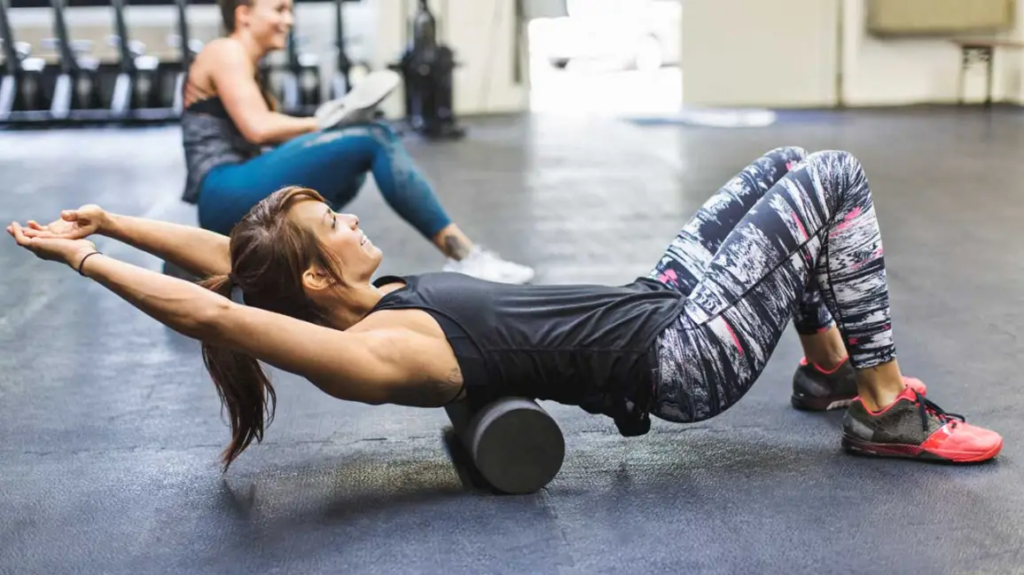
This multifunctional tool, often utilized in athletic training and rehabilitation, serves to alleviate tension in the fascia. Its cylindrical design, though primarily intended for this purpose, also allows for versatile applications, functioning as a Spine Corrector when needed. With its unstable surface, it presents a unique challenge to balance, enhancing core stability and proprioception.
Experiment with exercises such as Arm Circles, Knee Lifts, Toe Taps, or Dead Bug variations while resting your spine on the Roller. Alternatively, position it horizontally to support your pelvis during exercises like the Shoulder Bridge or a spring-less Leg Spring Series. Placing it beneath the shoulder blades aids in Abdominal Curls and encourages spinal extension, providing additional support and alignment throughout your workout routine.
2. Hand weights

In Pilates, the incorporation of light hand weights is key to maintaining focus on the entire body. We integrate one- or two-pound weights to intensify the Standing Arm Series and the Wall Exercises, offering a subtle yet effective challenge. Additionally, these weights serve as excellent alternatives for the Arm Springs on the Cadillac and the handles on the Reformer, enhancing versatility in exercises.
Notably, many Reformer movements, spanning from Coordination to Rowing to Backstroke, seamlessly translate to the Mat with the inclusion of hand weights, enriching the Pilates experience with added depth and engagement.
3. Theraband
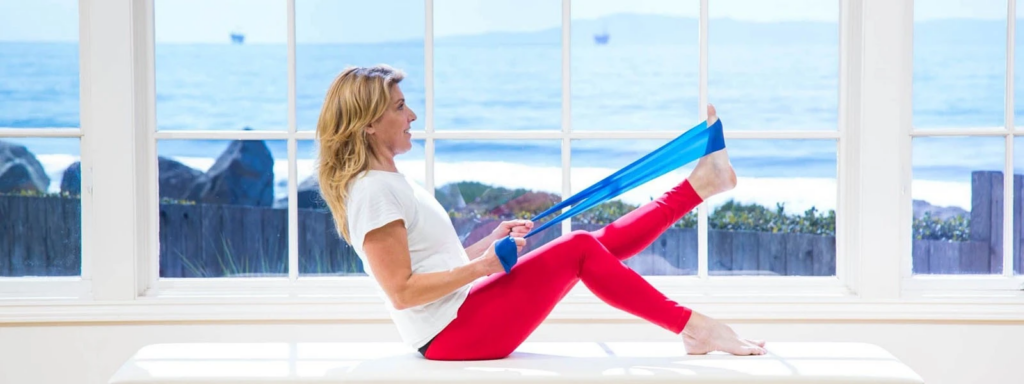
Enhance your workout routine with this versatile, elastic band, offering a range of resistance levels tailored to your needs. Perfect for targeting the hamstrings and lower back during floor exercises, it facilitates deep stretches while lying on the mat. Amp up the intensity of your Side-Lying Leg Series by incorporating this band for added resistance and a heightened challenge.
Additionally, experience enhanced support and stability during core-strengthening exercises like the Roll Up, Roll Back, and One Leg Circle, thanks to the reliable assistance of this band. Elevate your fitness journey with this essential accessory designed to optimize your performance and maximize your results.
4. Overball
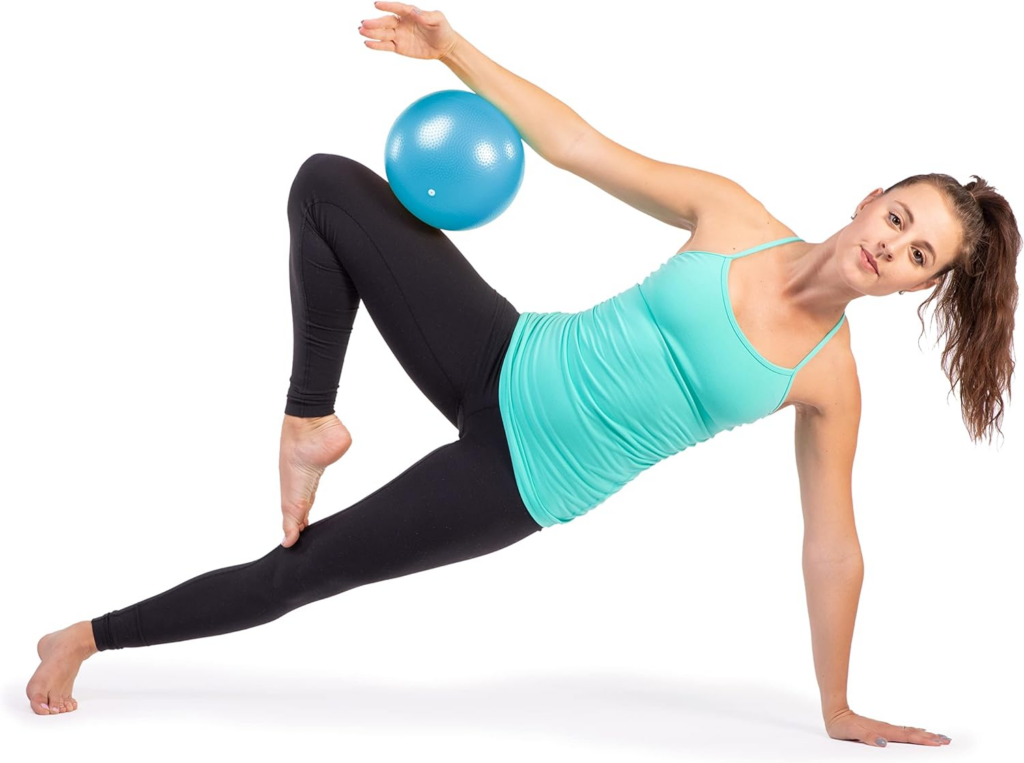
The squishy inflated ball, a staple in any Pilates studio, emerges as a versatile and ubiquitous prop. Whether nestled between the inner thighs, ankles, or palms, it beckons the engagement of surrounding muscles, amplifying the effectiveness of each movement. Its utility extends further as a modification tool, offering crucial support when positioned under the spine or hips. Particularly for pregnant individuals, the ball becomes a trusted ally, providing relief by propping up the mid-back and alleviating the need for extended periods of lying supine.
5. Tennis Ball

Joseph Pilates introduced various pieces of Pilates equipment, including the renowned Foot Corrector, designed to strengthen and engage the feet. Among these tools, Tennis Balls stand out for their versatility and effectiveness in foot awakening exercises.
By rolling the sole of your foot over a Tennis Ball while standing or seated, you can stimulate circulation and enhance flexibility. Moreover, Tennis Balls can serve as therapeutic aids by placing them under tender areas like the hips or shoulders for a static stretch or gentle rolling massage, providing relief and relaxation.
6. Franklin Ball

These inflatable wonders are more than just balls—they’re your ticket to invigorating muscle and fasciae therapy. Positioned strategically under the pelvis, lower back, shoulders, or any area harboring tension, Franklin Balls partner with your body’s weight to unlock knots and tightness. Glide them gently for a blissful self-massage or let them work their magic with static pressure. Say hello to newfound flexibility and goodbye to pesky soreness.
7. Pole
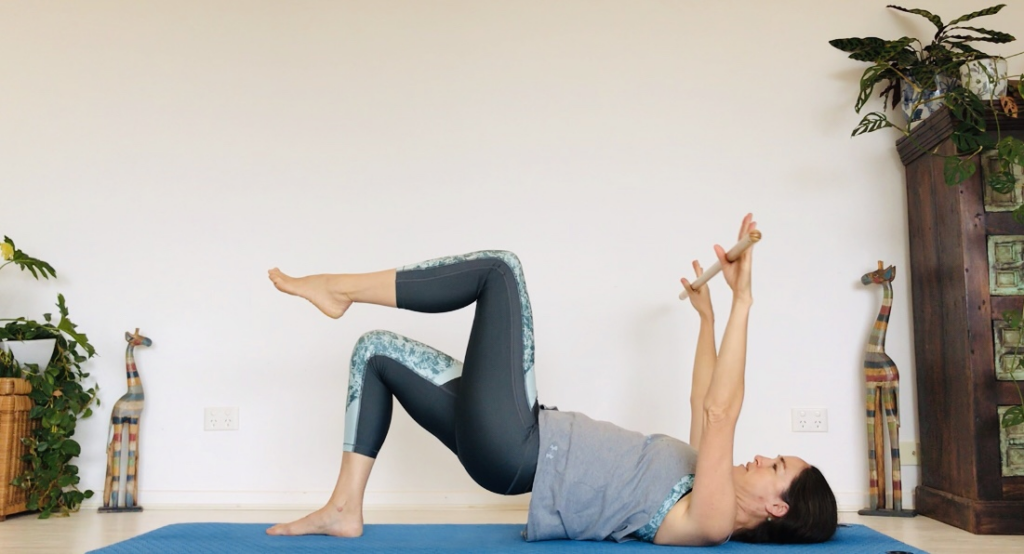
Incorporating short, weighted poles can enhance your Pilates routine, serving as substitutes for the Cadillac’s Roll Back Bar in exercises like Breathing and Thigh Stretch. Introducing a Pole into the traditional Roll Up exercise not only increases resistance during the ascent but also amplifies the stretch in the forward rounding position, elevating the challenge and effectiveness of the movement.
8. Magic Circle
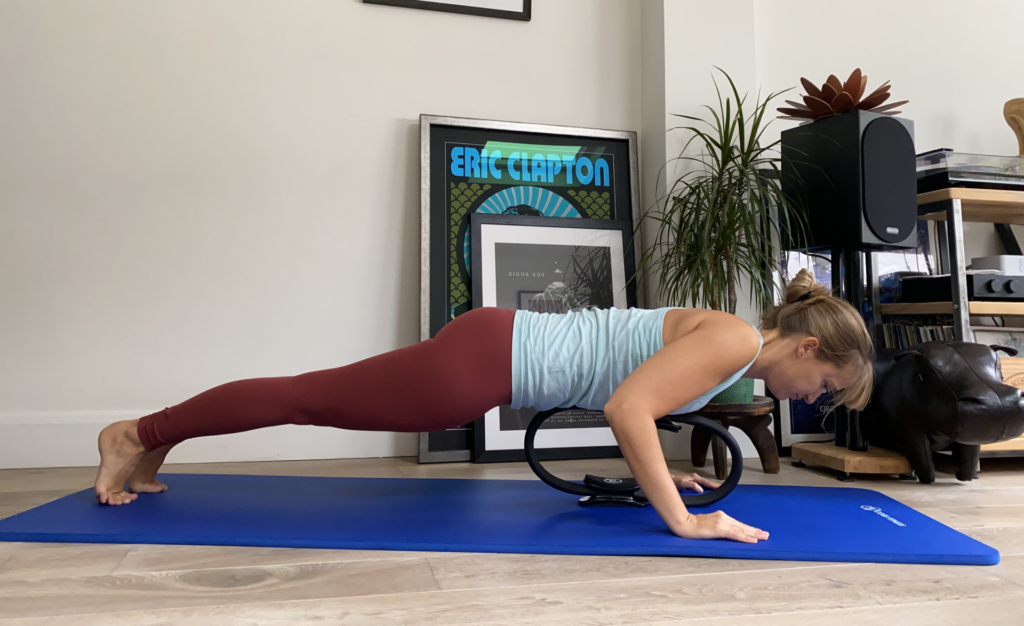
The Magic Circle stands out as one of the most iconic and adaptable tools in Pilates practice, boasting a plethora of applications. Whether gripped between the ankles, thighs, or palms, it serves as a valuable aid in honing alignment and centering—the bedrock of Pilates philosophy encapsulated in the mantra “drawing in and up.” Furthermore, its placement can introduce instability akin to an Overball, enhancing core engagement during exercises like Side-Lying or Side Kick Kneeling.
Even during standing sequences, where the Circle is positioned strategically above and between ankle bones, it presents a formidable balance challenge, enriching the practice with dynamic tension and facilitating deeper stretches in forward rounding movements. Truly, the Magic Circle transcends the confines of its modest form, elevating Pilates routines to new heights of precision and effectiveness.
9. Chair
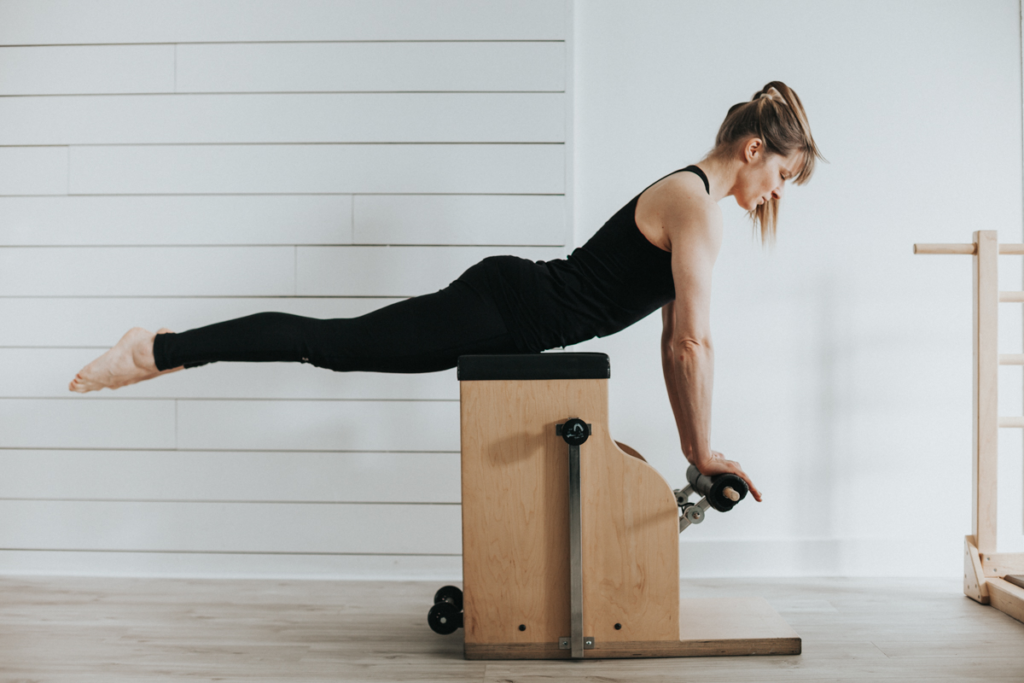
Just as “Chair Yoga” offers accessible variations of traditional poses, Pilates exercises can also be adapted for seated practice, making them ideal for beginners and those seeking gentle movement. Sitting upright promotes spinal elongation, akin to sitting on a Foam Roller or Yoga Block.
Start with exercises like Spine Stretch Forward, Spine Twist, or the Saw, which can all be comfortably performed in a seated position. Additionally, there are “TV Exercises” designed to enhance trunk stabilization, perfect for incorporating into your routine while traveling or sitting at your desk. These versatile exercises offer a convenient way to prioritize fitness and well-being, even in the busiest of schedules.
10. Yoga Block

In the serene space of a yoga class, blocks serve as indispensable aids, gently coaxing the floor closer to you during Forward Folds. Yet, their versatility transcends yoga; in the realm of Pilates Mat classes, these sturdy yet yielding foam blocks assume multiple roles, seamlessly substituting for a Magic Circle or Overball. Elevating the sacrum in a Shoulder Bridge, or providing a stable platform in seated exercises, they lend support and stability.
Embracing a block between the hands during Single Leg Kick fosters engagement of the back muscles and upper arms with a subtle embrace. Meanwhile, strategically placed beneath the hands, a pair of blocks gracefully facilitates the accessibility of Leg Pull Back, enhancing the fluidity and efficacy of the movement.
